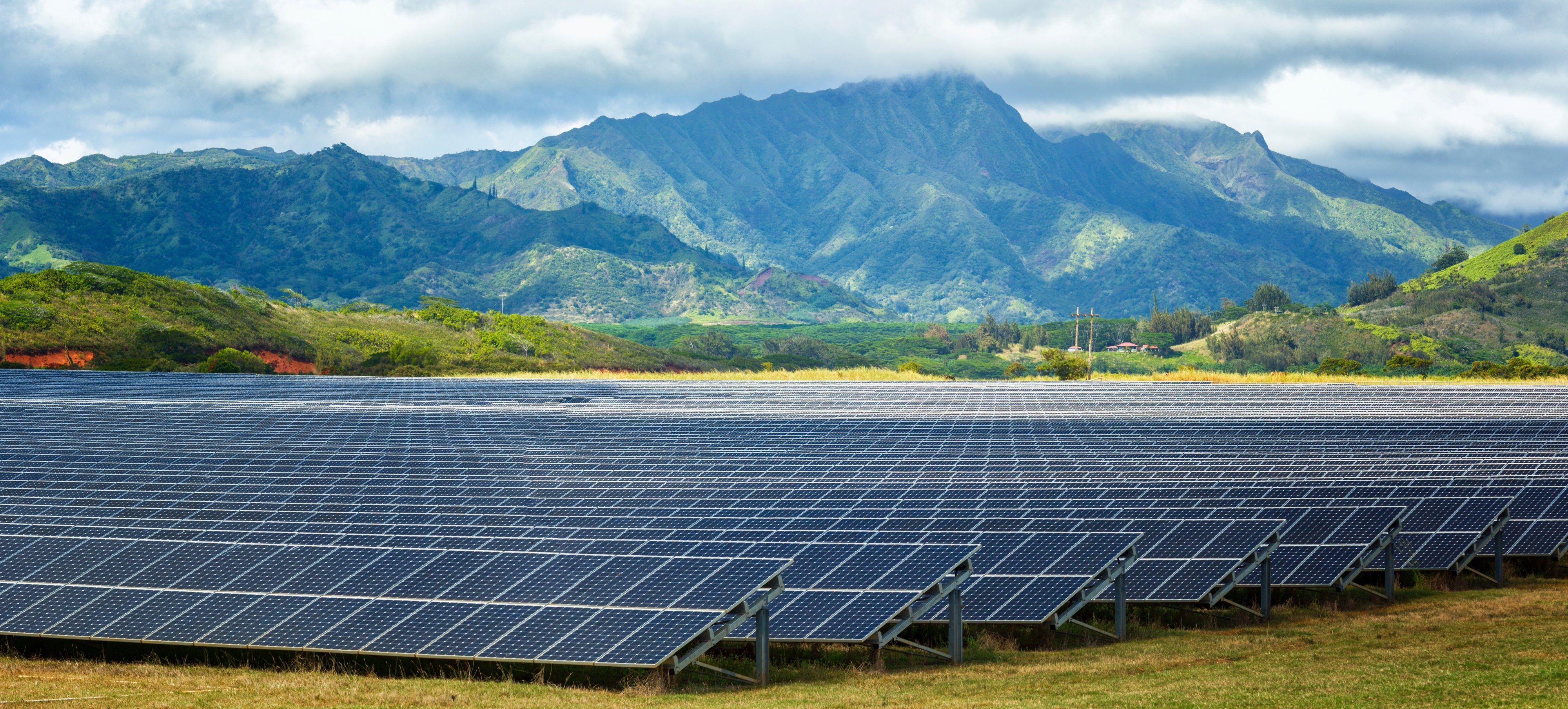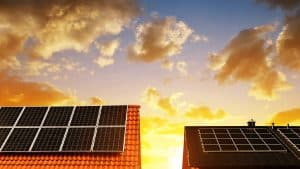
The Basics of Using Solar Power in Hawaii – Batteries, Charging & More
Solar power is an eco-friendly alternative energy solution that offers many advantages over its counterparts, from saving on electricity bills and greenhouse gas emissions reduction to making you more energy independent in the great state of Hawaii.
Solar Panels
 Solar panels are large black pieces of equipment you may see at homes and businesses. Each panel contains silicon solar cells (photovoltaic cells) which absorb sunlight to convert it to electricity. Each panel is connected with wiring and circuitry to gather this flow of electricity and collect its flow of current.
Solar panels are large black pieces of equipment you may see at homes and businesses. Each panel contains silicon solar cells (photovoltaic cells) which absorb sunlight to convert it to electricity. Each panel is connected with wiring and circuitry to gather this flow of electricity and collect its flow of current.
Solar energy generation can be achieved using various techniques and systems. One simple strategy involves hiring the pros at https://familyfirstsolar.com and mounting panels on areas of your property with good sun exposure that receive less shade than average in their region. Output may further be increased through tilted systems that orient panels with the daily and seasonal movement of the sun or by using lenses or parabolic mirrors for increased production.
They produce direct current (DC), which flows through their wiring before being converted to alternating current (AC) by an inverter – an electronic device used to convert DC electricity to AC current that appliances use when connected via standard wall sockets. Once converted, this AC electricity can then be used to power household and commercial appliances.
Solar Batteries
Home batteries provide the perfect way to store energy produced from panels that exceed your needs, giving you access to less expensive electricity during times of peak demand and protecting you during power outages. Home batteries also help reduce carbon emissions and promote a greener world.
There is an array of solar batteries, from tried-and-true lead-acid batteries to innovative lithium-ion and flow batteries, that offer different benefits; some may need special inverters to pass DC power directly into them while others work well with standard AC solar inverters. Other aspects that impact performance may include depth of discharge (sciencedirect.com/topics/engineering/depth-of-discharge), round trip efficiency, warranty, etc.
To maximize the potential of your solar energy system, your home battery should be properly sized. It’s important that you consider factors like energy consumption, time-of-use rates and grid rates when selecting an ideal size – using calculators provided by battery manufacturers can make this easier!
Battery charging is also crucially important. A solar battery’s DoD, or percentage of total capacity used up, should not exceed 25% as this would reduce its lifespan; most manufacturers provide maximum DoD values for optimal performance.
Before agreeing to participate, make sure you take into account how the policy will evolve over time and keep in mind how your electricity usage and home size will influence energy storage needs. Consult an experienced solar installer in order to select an adequate size system.
Solar Panel Installation
Once you’ve decided to go solar and signed an agreement with a provider, the next step should be getting your system installed. There will be paperwork involved, such as applications for any available tax credits or incentives and your home ownership agreement or power purchase contract; as well as local, state, or utility fees due at installation time.
Once all paperwork is signed and sent off to be ordered, your equipment can be shipped directly from the vendor. This can take anywhere from weeks to months depending on their workload and what company is being chosen as the vendor of choice. It’s essential that a company with experienced and knowledgeable personnel be selected – also be sure to review any certifications, warranties, or reputation they offer as this may have an effect.
Once the equipment arrives, your chosen team can get right to work installing it on your roof. They’ll start by setting up the mounting system like this, wiring, and micro inverters (which convert direct current from panels into the alternating current needed by your house to run appliances and lights), before laying out your panels grid according to system design.
Once your panels have been installed, your installer will connect an inverter to the generation meter and switchover box, connecting your panels directly with your household electricity system. After everything is hooked up, they’ll test it by turning off your main breaker and switching on your sun inverter; from here you can monitor how much electricity your panels are producing in real-time.
Solar Panel Maintenance
Panel maintenance generally includes cleaning and inspections. Regular cleaning will help prevent dust build-up that could restrict solar energy output. Most often this task is straightforward; however, if you live in an area without frequent rainfall or your panels are high off of the ground professional cleaners may be necessary.
Inspection is one of the key components of PV system maintenance. You should make sure your panels are charged up and are free from visible signs of damage. You should also regularly test their output with a voltmeter; with monitoring services you should be able to see the results on your dashboard or electricity bill.
Charging solar batteries on a regular basis should be an easy and straightforward task, and is ideal when done prior to sunrise, when its strength will provide maximum charge capacity for maximum results.
Once every year, it’s important to conduct a comprehensive inspection of your panel hardware, including its mounting brackets for cracks or rust. Also regularly examine MC4 connectors between your charge controller and panels – loose or corroded connections should be tightened with a wrench. Bicarbonate and soda water solutions should also be used on them to help prevent further corrosion.